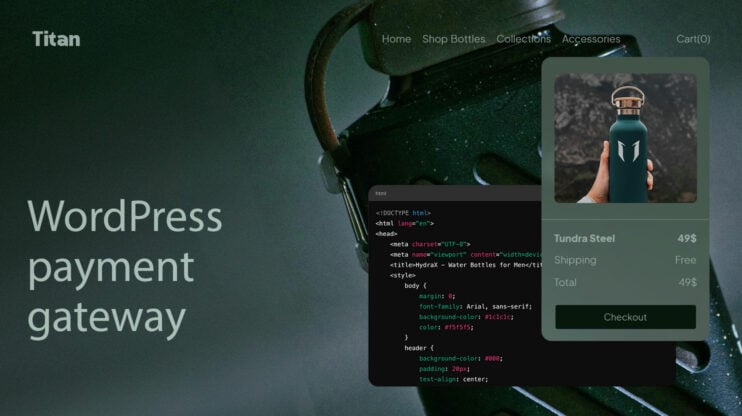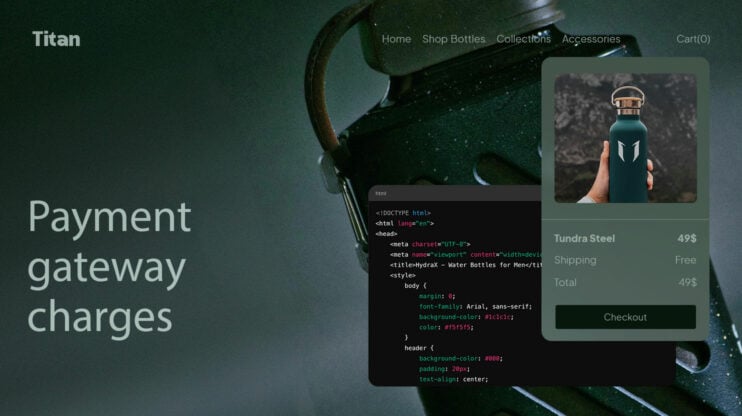Ecommerce order management has become increasingly important because of the growth of online shopping. Stores that do it well can ship faster and make fewer mistakes. This leads to happier customers who come back to buy more. It also helps businesses save money by cutting down on wasted time and resources.
Order management software helps businesses handle the whole process in one place. These tools let companies see their orders, inventory, and shipping all at once. This makes it easier to spot problems and fix them fast. It also helps stores sell through many channels, like their website and social media.
This article explores the key aspects of ecommerce order management, from its importance in simplifying operations to the essential features of order management software. You will learn about automation, inventory tracking, and emerging trends like AI, along with practical tips and top tools to enhance their order fulfillment process.

Create your online store in minutes!
Looking to sell online? Develop and launch your store with 10Web AI Ecommerce Website Builder.
FAQ
What are the best tools for order management? How does an order management system work? What features should I look for in an OMS? Can I find free order management software? What is the role of an order management system? How to choose an order management solution? What is the difference between OMS and ERP? How does order processing impact customer satisfaction? Is integration with ecommerce platforms necessary?
Overview of ecommerce order management
Ecommerce order management is key to running a smooth online business. It helps track sales, process orders, and manage inventory. Good order management keeps customers happy and businesses running well.
Defining order management in ecommerce
Order management in ecommerce is about handling customer orders from start to finish. It begins when a customer places an order and ends when they get their items. This process includes:
- Receiving the order
- Checking stock
- Picking items
- Packing boxes
- Shipping products
- Tracking deliveries
An order management system (OMS) is a digital tool that helps with these tasks. It keeps all order info in one place. This makes it easier for businesses to stay on top of their sales and inventory.
Importance of efficient order management
Good order management is vital for online stores. It helps them:
- Fill orders faster
- Make fewer mistakes
- Keep track of stock
- Save time and money
With a solid system, businesses can see what’s selling well and what’s not. This helps them make smart choices about what to stock. It also lets them spot problems early, like low inventory or shipping delays.
Customers benefit too. They get their orders on time and can easily check the status. This leads to happier shoppers who are more likely to buy again. For businesses, this means more sales and growth.
Key features of ecommerce order management software
Good order management software helps online stores run smoothly. It takes care of many tasks to make selling easier and keep customers happy.
Inventory management integration
Order management software connects with your inventory system. This link keeps track of what you have in stock. When someone buys an item, the software updates your inventory count right away.
You can set up alerts for low stock. The software will tell you when it’s time to order more products. This helps prevent selling items that are out of stock.
Some systems can even order new stock for you. They look at your sales history and predict what you’ll need. This saves time and keeps your shelves full.
Automated order processing
Automation makes handling orders faster and less prone to mistakes. When an order comes in, the software can do many things on its own.
It can send order details to your warehouse. Workers there will know what to pack and ship. The software can also create shipping labels and track packages.
You can set up rules for different types of orders. For example, big orders might need special handling. The software can route these to the right team automatically.
Customer relationship management (CRM)
Order management software often includes tools to manage customer info. It stores details like names, addresses, and purchase history.
This data helps you give better service. When a customer calls, you can see their past orders quickly. You’ll know what they bought and if they had any problems.
The software can also help with marketing. You can use order data to send targeted emails. For example, you might offer a deal to people who haven’t bought in a while.
How do you manage ecommerce orders?
Managing ecommerce orders involves several key steps. First, you need a system to receive and process orders when customers make purchases. This can be done through your online store platform.
Next, check if the items are in stock. Update your inventory levels right away to avoid overselling. If items are available, start getting them ready to ship.
Pack the products carefully. Use the right size box and padding to keep items safe during transit. Include a packing slip with order details.
Choose a shipping method and create a label. Many ecommerce platforms link up with shipping carriers to make this easier. Let the customer know their order has shipped and give them tracking info.
Keep tabs on orders as they move through these stages. Use order management software to track status, from payment to delivery.
Be ready to handle issues like returns or exchanges. Have a clear policy and process for customers who need to send items back.
Good customer service is key. Answer questions quickly and solve problems to keep shoppers happy. This helps build trust and encourage repeat business.

Create your online store in minutes!
Looking to sell online? Develop and launch your store with 10Web AI Ecommerce Website Builder.
4 best ecommerce order management software
In this section, we’ll explore some of the best ecommerce order management software available, highlighting key features and benefits of the platforms. These tools offer a range of solutions, from automation and inventory management to order processing and seamless integration with popular ecommerce platforms, helping businesses streamline their operations and improve efficiency.
Orderhive
Orderhive is an ecommerce automation platform that helps you manage your online business. It lets you handle inventory, orders, and shipping all in one place. You can connect it to many popular ecommerce sites and marketplaces.
The software aims to save you time by automating tasks. It can do things like update stock levels and process orders without you having to do it manually. This frees you up to focus on growing your business.
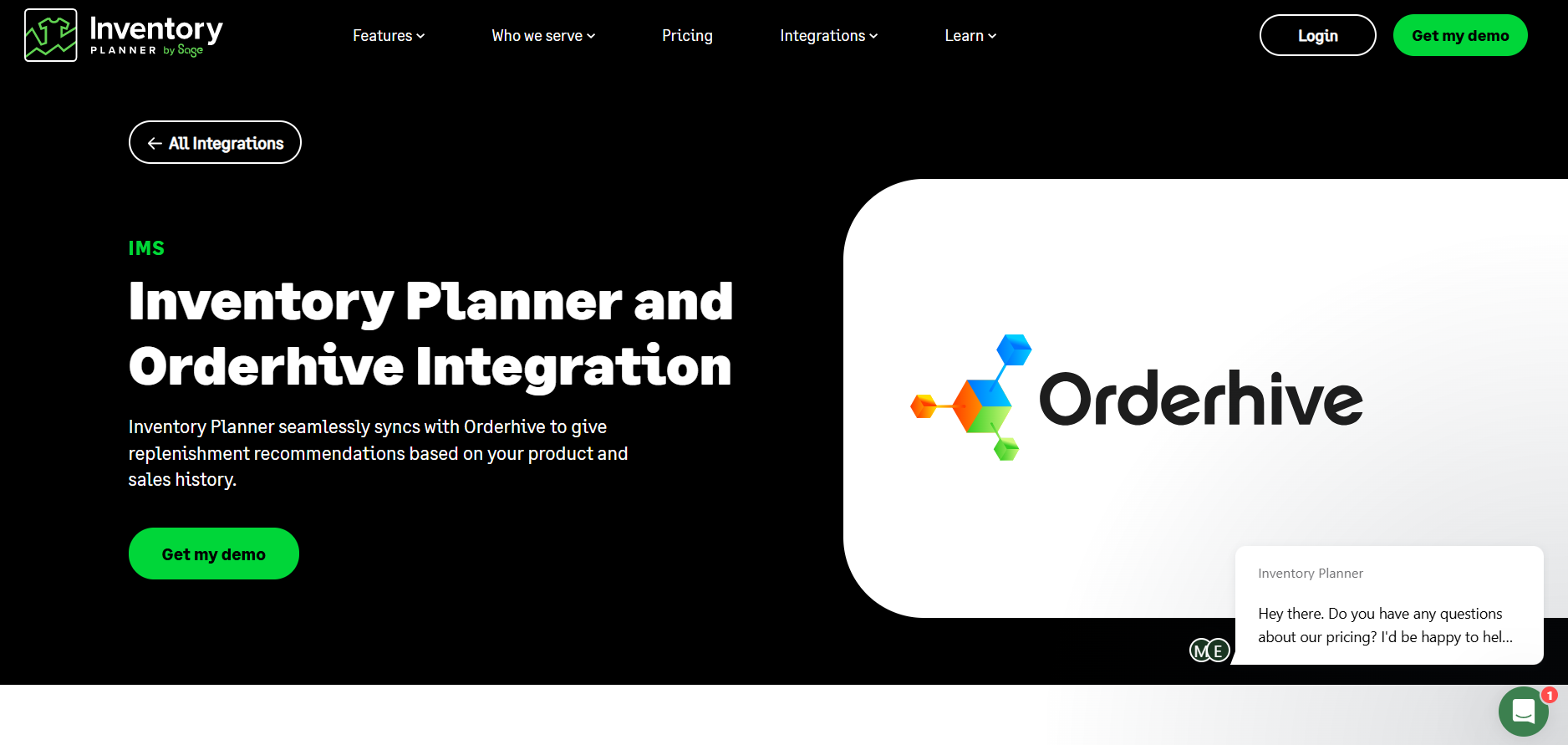
Orderhive offers features to track your inventory across different sales channels. You can see what’s in stock and what needs reordering. It also helps with order processing, making it easier to get products to customers quickly.
The platform includes tools for shipping management too. You can print labels, track packages, and manage returns all from one dashboard. This can make your shipping process smoother and more efficient.
Pricing for Orderhive starts at $44.99 per month. This is lower than some similar services. You can try it out first to see if it fits your needs before committing to a paid plan.
Shipstation
ShipStation is a popular tool for managing ecommerce orders and shipping. It connects to many online stores and marketplaces. This lets you handle orders from different places in one spot.
You can use ShipStation to print shipping labels quickly. It works with big carriers like UPS, USPS, and DHL. The software also helps you track packages and manage your inventory.
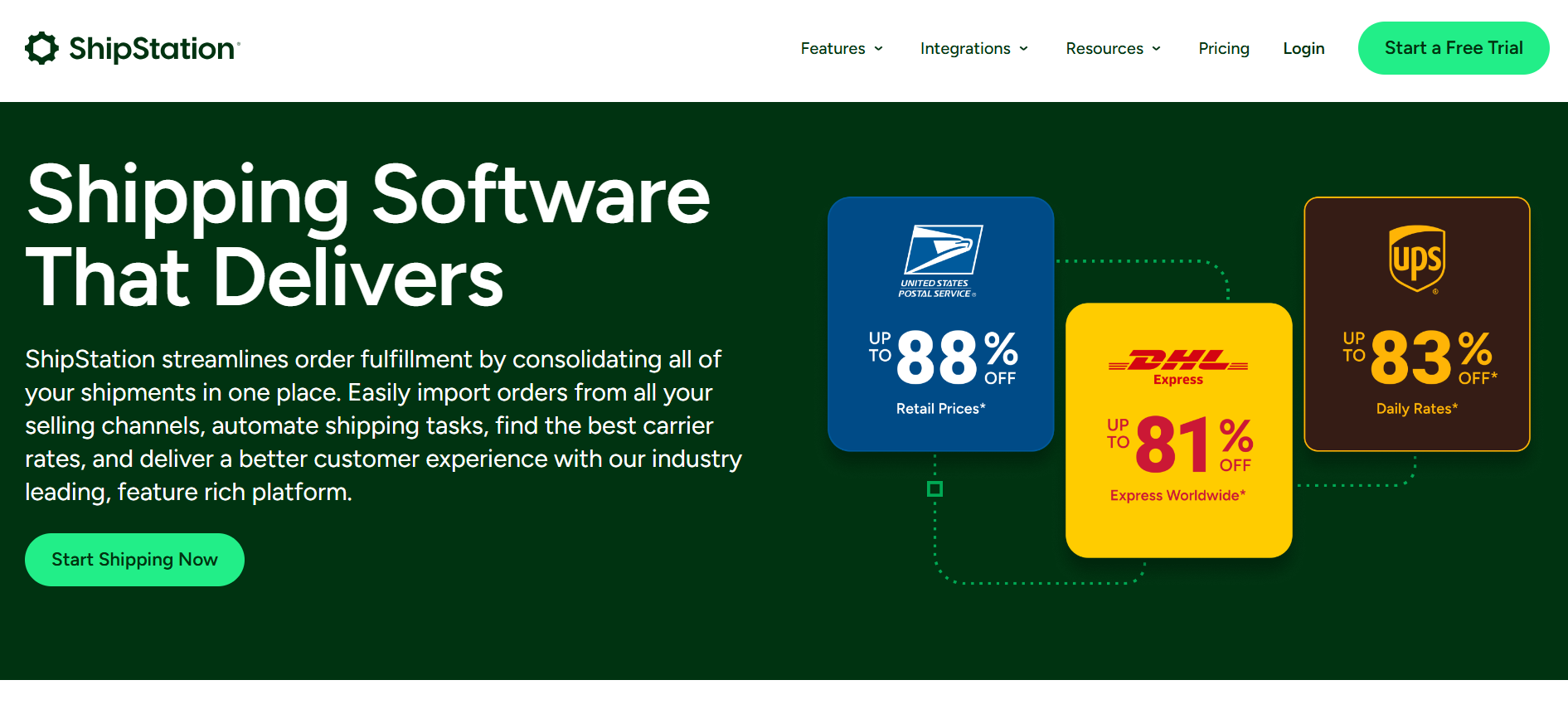
ShipStation offers ways to save time on shipping tasks. You can set up rules to automate parts of your process. This means less manual work for you.
The tool gives you discounts on shipping rates. These savings can add up, especially if you ship a lot of packages.
ShipStation has a mobile app too. This lets you manage orders and shipments when you’re not at your desk.
You can use ShipStation to create branded packing slips and emails. This helps your business look more professional to customers.
The software also helps with returns. You can make and track return labels easily.
Cin7
Cin7 is a cloud-based inventory management software that helps businesses handle stock across multiple sales channels. It connects with popular ecommerce platforms 10Web, WooCommerce, Magento, Amazon, and BigCommerce.
With Cin7, you can keep track of inventory levels in real-time across all your online stores and marketplaces. This means you’re less likely to oversell items or run out of stock unexpectedly.

The software also helps with order processing. It can automatically update order status and sync information between your different sales channels. This cuts down on manual work and helps prevent mistakes.
Cin7 is useful for different types of businesses, including those that sell directly to consumers (B2C) and those that sell to other businesses (B2B). It works for online stores as well as physical retail shops.
Besides inventory tracking, Cin7 offers tools for managing purchase orders, sales orders, and shipping. You can see all this information in one place, which makes it easier to run your business smoothly.
Zoho inventory
Zoho Inventory is online software that helps small businesses manage their inventory and orders. It makes it easy to keep track of stock and handle sales across different online stores.
With Zoho Inventory, you can see how much stock you have in different warehouses. You can move items between locations and update quantities as needed. This helps make sure you don’t run out of popular products.
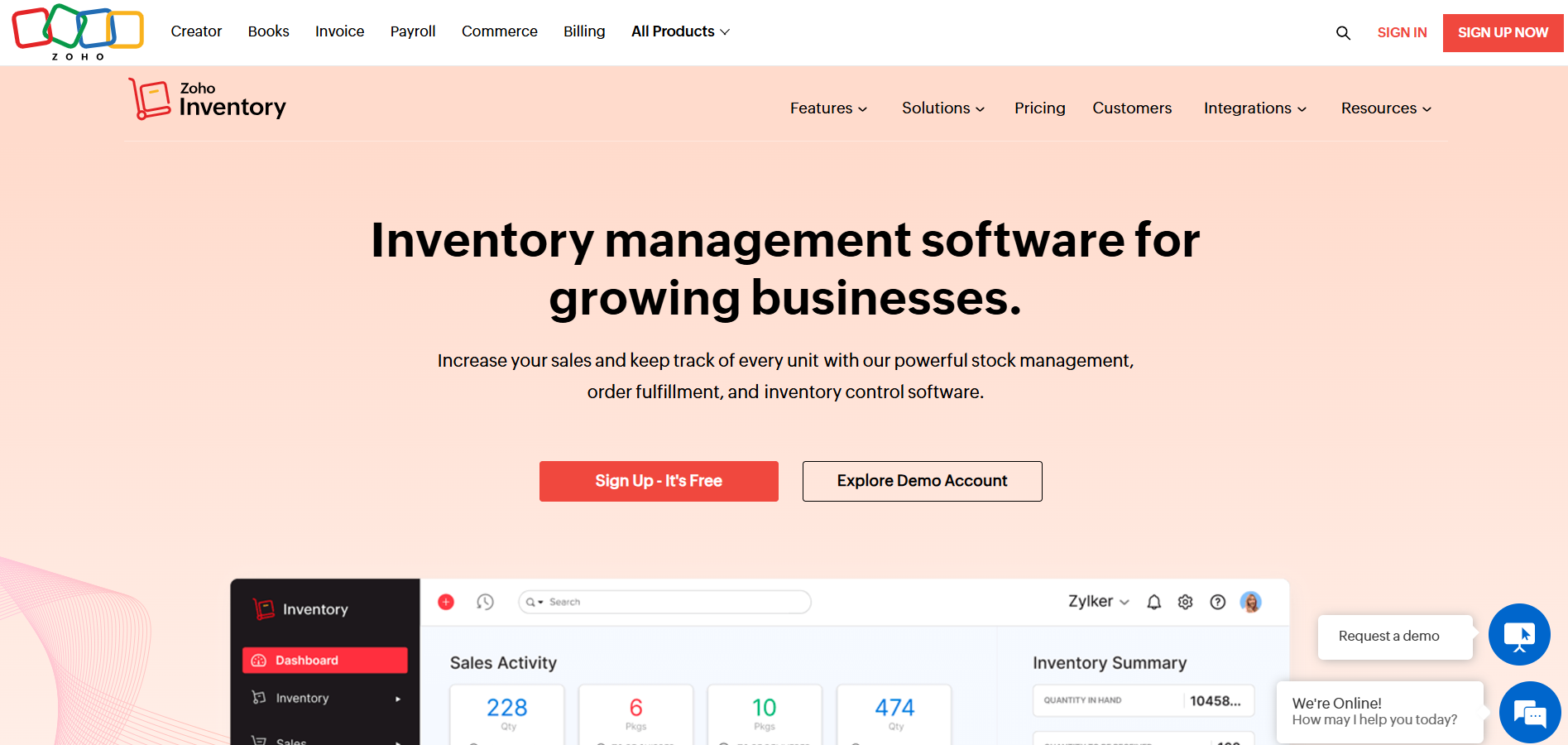
The software connects to many ecommerce platforms. This lets you manage all your online sales in one place. When an order comes in, Zoho Inventory updates your stock levels right away.
Zoho Inventory also helps with shipping. You can create packages, print labels, and send tracking info to customers. This makes the whole order process smoother.
For small and medium-sized online retailers, Zoho Inventory is a budget-friendly choice. It has the key features you need without being too complex. You can try it out for free to see if it works for your business.
Brightpearl
Brightpearl is a popular order management software for retailers. It helps you handle orders from many sales channels in one place. The software speeds up order processing with automated workflows. This means you can get more done in less time.
You can quickly set up new sales channels with Brightpearl. It connects to major ecommerce platforms and other tools you might use. This saves you time when expanding your business online.
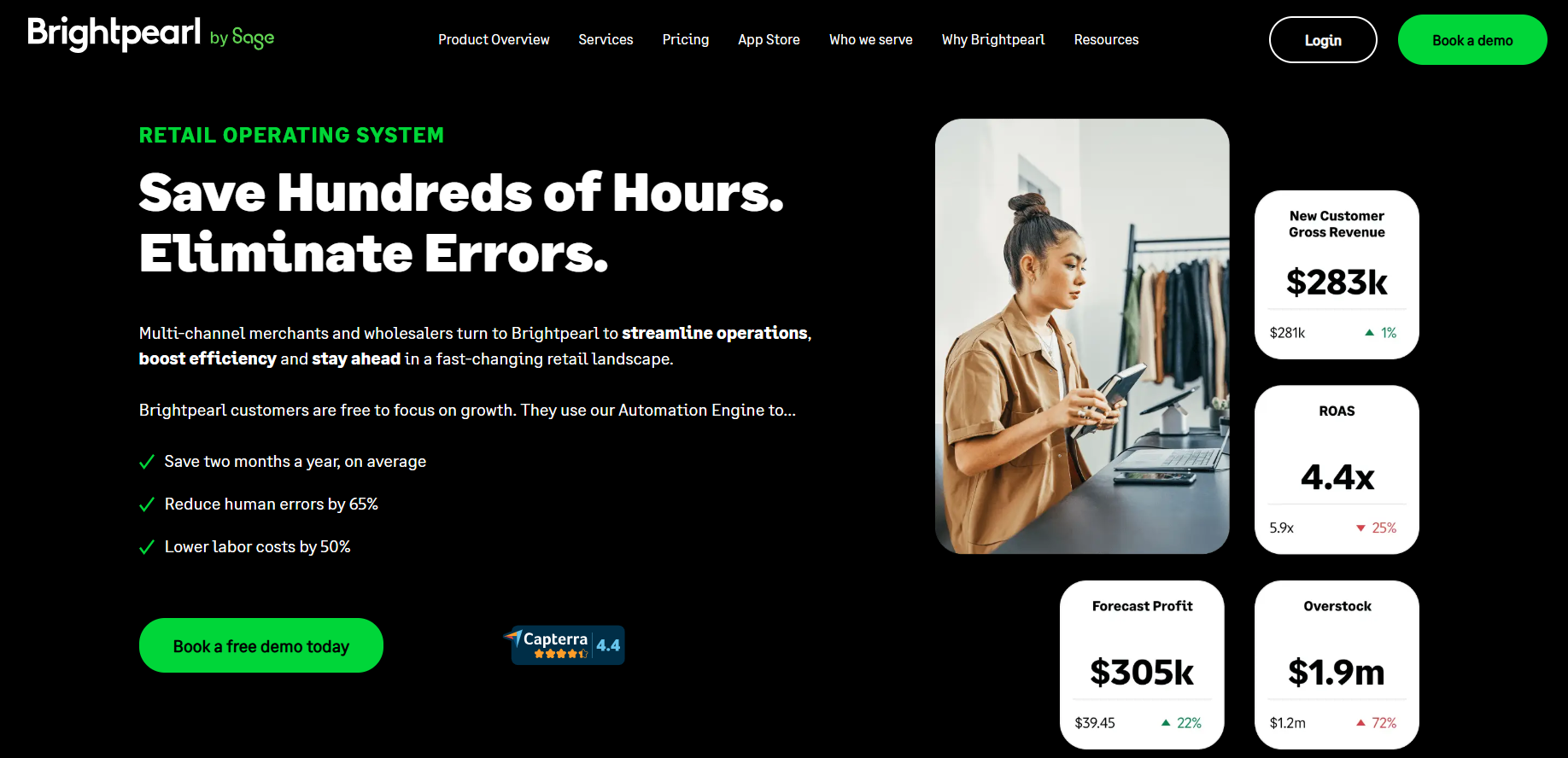
Brightpearl also gives you insights about your business. You can see how well your sales channels, products, and customers are doing. It shows you important numbers like revenue and average order value. This helps you make smart choices about where to focus your efforts.
The software updates your inventory automatically when you make sales. It also creates accounting records in real-time. This keeps your stock levels accurate and your finances organized.
Brightpearl’s retail point of sale software works with its back office system. This gives you a complete view of your business. You can see each customer’s full order history in one place.
Challenges in ecommerce order management
Ecommerce businesses face several hurdles in managing orders. These issues can make it hard to keep customers happy and run things smoothly.
Scalability issues
As online stores grow, they often struggle to handle more orders. Busy times like holidays can overload systems that worked fine before. This can lead to slow processing, shipping delays, and upset customers.
Old software might not be able to keep up with higher order volumes. It may crash or make mistakes when trying to process too many orders at once.
Manual processes also don’t scale well. Tasks like data entry and order picking take longer as order numbers rise. This can cause bottlenecks and errors.
To fix these problems, businesses need flexible systems. Cloud-based tools can grow with the company. Automation can speed up tasks and cut down on human error.
Data security concerns
Keeping customer info safe is a big worry for online stores. Hackers often target ecommerce sites to steal payment details and personal data.
Weak security can lead to data breaches. These can hurt a store’s reputation and lead to fines. Customers may lose trust and shop elsewhere.
Payment info is extra sensitive. Stores need strong encryption and secure payment gateways. They also have to follow rules like PCI DSS to protect card data.
Other data like addresses and order history need protection too. Good access controls stop unauthorized people from seeing this info.
Regular security checks can find weak spots before hackers do. Staff training helps prevent mistakes that could put data at risk.
Order fulfillment and shipping
Once inventory is allocated, warehouse staff can start packing the order. They use a pick list to find and gather the right items. Some warehouses use barcode scanners to make this faster and more accurate.
Staff then pack the items securely to prevent damage during shipping. They may include packing slips, return labels, or promotional materials.
The final step is shipping the package. Staff weigh the box and print a shipping label. They then hand it off to the shipping carrier. Many businesses use software to compare shipping rates and print labels automatically.

Create your online store in minutes!
Looking to sell online? Develop and launch your store with 10Web AI Ecommerce Website Builder.
Payment processing and security
Payment processing and security are key parts of ecommerce order management. Safe transactions and data protection build trust with customers and keep your business running smoothly.
Payment gateway integration
A payment gateway links your online store to the banks that handle credit card payments. It encrypts sensitive data like card numbers to keep them safe. When you set up a payment gateway, you’ll need to pick one that works with your ecommerce platform.
Popular gateways include Stripe, PayPal, and Square. Look for ones that accept many payment types. Credit cards, debit cards, and digital wallets like Apple Pay should all be options. This gives customers more ways to pay.
Make sure the gateway has good uptime. Your store can’t make sales if the payment system is down. Check reviews and uptime stats before you choose.
Fraud prevention and security measures
Fraud can hurt your business and customers. Use tools to spot fake orders and stop theft. Address verification checks if the billing address matches the card. Card verification value (CVV) asks for the code on the back of cards.
3D Secure adds an extra step where customers prove it’s really them. This can cut down on chargebacks from stolen cards. Machine learning systems can flag odd purchases based on past order data.
Keep all customer data safe with encryption. Use HTTPS on your whole site, not just checkout pages. Follow PCI DSS rules if you store any payment info. Train your staff on security best practices too.
Order tracking and customer communication
Keeping customers informed about their orders is key for online stores. Good tracking and updates build trust and reduce support requests.
Real-time order tracking features
Many ecommerce platforms now offer real-time order tracking. This lets shoppers see exactly where their package is at any time. Some common features include:
- Map views showing package location
- Estimated delivery dates
- Status updates (order received, shipped, out for delivery, etc.)
- Carrier and tracking number info
These tools give customers peace of mind. They don’t have to wonder when their order will arrive.
Real-time tracking can also help stores spot and fix issues faster. If a package gets stuck, the store can take action right away.
Communication channels and updates
Stores use different ways to keep customers in the loop about orders:
- Email: Most common for order confirmations and shipping updates • SMS: Quick text alerts about order status changes
- Mobile apps: Push notifications with real-time updates • Website: Order status pages customers can check anytime
Many shoppers want frequent updates. A study found 82% of buyers expect updates at each stage of shipping.
Stores should let customers pick how they want to get order info. Some prefer texts, while others like detailed emails. Giving options keeps more shoppers happy.
Analytics and reporting
Analytics and reporting help online stores track important data about orders and sales. This information shows how well the business is doing and where it can improve.
Key performance indicators (KPIs)
KPIs are numbers that measure success in ecommerce. Some key KPIs for order management include:
- Order accuracy rate: The percent of orders shipped without mistakes
- On-time delivery rate: The percent of orders that arrive when promised
- Average order value: The typical amount spent per order
- Return rate: The percent of items sent back by customers
Tracking these KPIs over time shows trends in order handling. Store owners can set goals for each KPI and work to improve them. For example, aiming for a 98% on-time delivery rate.
Data-driven decision making
Order data helps online stores make smart choices. Sales reports show which products are popular or not selling well. This guides inventory and pricing choices. Delivery data reveals shipping issues to fix.
Order trends also inform business plans. A rise in mobile orders may lead to improving the mobile checkout. Seeing more international sales could prompt adding new shipping options.
Regular data reviews keep stores on top of changes. Weekly or monthly reports catch problems early. Testing new ideas and tracking results leads to ongoing improvements in order management.

Create your online store in minutes!
Looking to sell online? Develop and launch your store with 10Web AI Ecommerce Website Builder.
Future trends and innovations
Ecommerce order management is changing fast. New tech is making orders quicker and safer for businesses and shoppers.
Artificial intelligence and machine learning
AI and machine learning are making order management smarter. These tools can predict what customers will buy and when. This helps stores keep the right items in stock. AI can also spot fraud and catch mistakes in orders before they ship.
Chatbots powered by AI help answer customer questions about their orders 24/7. They can track packages and handle simple problems without human help. This saves time for both shoppers and staff.
Machine learning helps route orders to the best warehouse or store for fast shipping. It looks at things like stock levels, distance, and shipping costs. This cuts delivery times and saves money.
Blockchain in order verification and tracking
Blockchain tech is making order tracking more open and safe. It creates a clear record of each step in the shipping process. This helps stop fake products and makes sure items are real.
Customers can see exactly where their order is at any time. They don’t have to wait for updates or wonder if their package is lost. This builds trust and makes people more likely to shop again.
Blockchain also helps with returns. It can prove an item is the same one that was shipped out. This stops fraud and makes the return process smoother for honest customers.
Conclusion
Effective ecommerce order management is crucial for businesses looking to streamline operations, reduce errors, and enhance customer satisfaction. By implementing the right order management software, companies can automate processes, track inventory in real-time, and provide timely updates to customers, ensuring smooth order fulfillment from start to finish. As ecommerce continues to grow, staying ahead of trends like AI, machine learning, and blockchain will further optimize order management, helping businesses improve efficiency, cut costs, and foster long-term customer loyalty.









